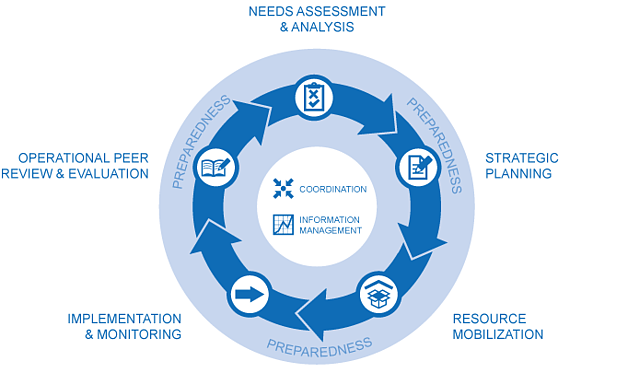The Humanitarian Programme Cycle refers to a series of actions undertaken in the management of international humanitarian response operations. These must be conducted, to the extent possible, in collaboration with and in support of national and local authorities.

The actions in the cycle, described below, are inter-related and should be managed in a seamless manner using a coherent approach and a common set of tools.
- Emergency preparedness is a distinct element of, and underpins, the entire cycle.
- Timely, coordinated assessments and analysis identify the needs of affected people and provide the evidence base for planning the response.
- Coordinated planning allows for the formulation of strategic objectives, what needs to be done to meet them, and how much it will cost.
- Funding and other resources are mobilized for the system based on and in support of the strategic response plan.
- Monitoring of agreed output and outcome indicators and the tracking of financial information demonstrates results and informs decision-making about the plan.
While implementation of the cycle should be flexible and adaptable to different country situations, it must at a minimum address the above elements. Whenever possible, it should support national and local partners, including NGOs, civil society and communities, and complement or build on existing frameworks; it should contribute to a response that builds resilience to future disasters.

















